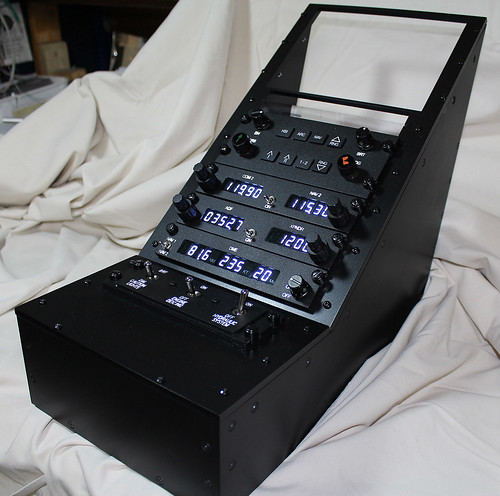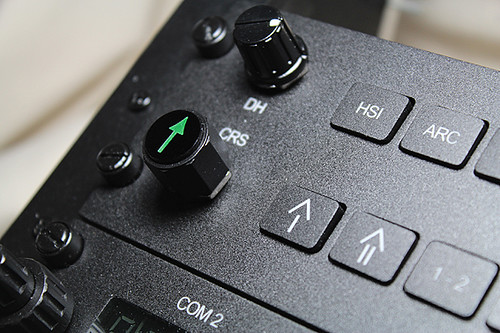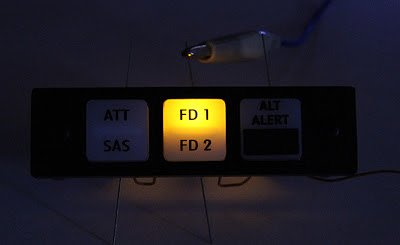This is an early preview of one of the many new items that we've been developing in the background over the past few months: an operational Autopilot System (the Ruscool RMC710), which is based around the Garmin Mode Controller (GMC 710) ...
The text on the faceplate is backlit, and all the buttons are able to be illuminated when their particular function is selected. The rotary encoders have pushbuttons like the real unit, and the roller wheel for the Vertical Speed adjustment has notches to allow for ease of turning,
The unit has been designed to fit into a separate backing plate which is then attached to the main instrument panel. This is currently being painted however, and we haven't got any decent photos of this yet (it was made yesterday), but we shall remedy this once the entire unit has been installed and is up and running in our customer's simulator. He lives locally too - which is mighty convenient!
Despite this system being designed around our own I/O boards, as with the majority of our products, wherever possible we also make each individual connection available directly from the PCB (see above photograph) so that our customers can use whichever interface system they wish. One reason to employ our own I/O boards is of course that all of the software and its capabilities are known to us, although an additional benefit is that we also have the ability to customise some of the logic as and when necessary.
And this is how it looked prior to the fitting of the buttonheads and knobs, the application of paint, and the completed engraving. You can just make out the backlit buttons through the open buttonholes.
Oops, what do you know ... the painting of the backing plate was finished and dried before we'd completed this post, so below is a quick photo of the assembled faceplate fitted into this particular version of backing plate.
Oops, what do you know ... the painting of the backing plate was finished and dried before we'd completed this post, so below is a quick photo of the assembled faceplate fitted into this particular version of backing plate.
As with all initial concept items, there are several slight alterations with regards to a few details here and there - such as replacing the mounting screws some more realistic countersunk types, and the concealment of the encoder nuts - which will be implemented on subsequent versions.























.jpg)
.jpg)
.jpg)
.jpg)

.jpg)




.jpg)

.jpg)
.jpg)
.jpg)











